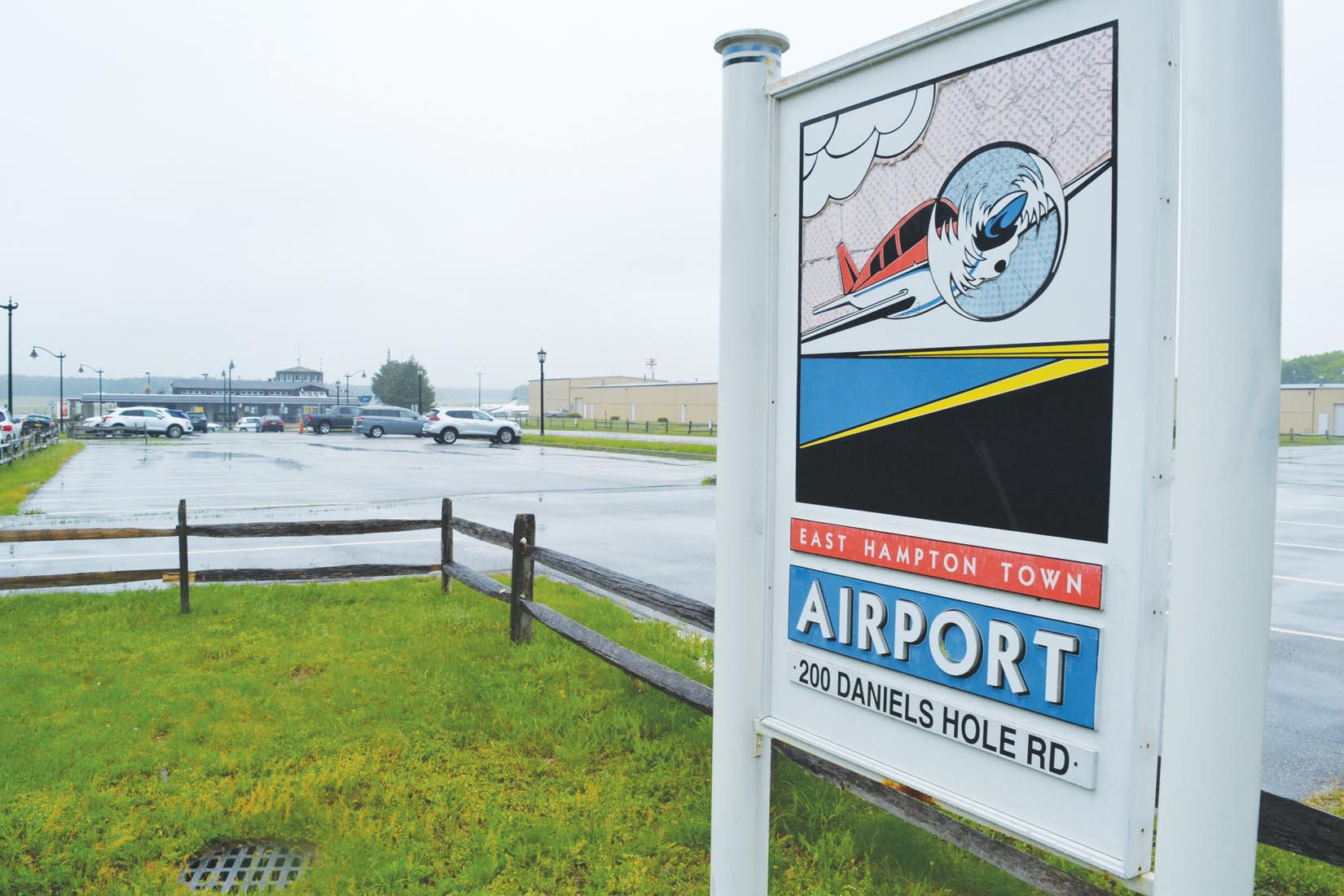State Declares Airport Superfund Site

The emergence of PFAS as a significant contaminant in drinking water was underscored again June 6 when the New York State Department of Environmental Conservation placed 47 acres in and near East Hampton Airport on its Superfund list.
There is a half-dozen locations in Suffolk that have been identified as hotbeds for perfluoroalkyl substances in the last few years. These chemicals were first detected in Westhampton and Westhampton Beach, then Bridgehampton, Yaphank, Wainscott, and East Quogue.
For decades, the federal Centers for Disease Control and the state DEC did not recognize or simply underestimated the dangers associated with ingesting the chemicals.
Perfluorinated chemicals like PFOS (perfluorooctanesulfonic acid) and PFOA (perfluorooctanoic acid) were commonly used in firefighting foam for decades, and local fire department used it to train at the airport. The chemical is also used to douse jet fires — explaining its presence at many U.S. Air Force facilities.
According to a 2013 presentation by the Air Force, PFCs were found at every Air Force base that had been tested, which included Randolph in Texas, Robins in Georgia, Beale and McClellan in California, Eglin in Florida, Ellsworth in South Dakota, and F.E. Warren in Wyoming.
More recently widespread contamination was identified in Duchess County emanating from alley Regional Airport. In addition, the chemicals are commonly used in many household products, most notably 3M Scotchgard. Dow is being sued by numerous entities to force the company to share cleanup costs and East Hampton Town has indicated it may do so as well.
The town has already presided over an effort to replace private drinking wells throughout the hamlet of Wainscott. Upon notice of initial findings of PFAS contamination in the fall of 2017, urged Wainscott residents to have their private wells tested, and provided free bottled water to anyone within the area of concern.
There was some grumbling among residents there who said the town was aware of the contamination months earlier. The town ultimately arranged for the Suffolk County Water Authority to extend public water mains throughout the hamlet, which was completed at the end of 2018, and offered $3000 grants to those whose wells were found to contain PFAS to enable them to install water treatment systems in the interim, before public water became available.
Through a bond issue, the town also offered those hooking up to public water the option of amortizing the private connection line costs by repaying them over time as an addition to property tax bills.
According to an East Hampton Town press release, “East Hampton Town has remained vigilant by hiring leading experts in this field who have worked with numerous municipalities for years in solving water-related issues. The Town has retained Rigano LLC as environmental counsel and retained pre-eminent hydrogeologists. On behalf of the Town, Rigano LLC has sued the manufacturers of the PFAS chemicals, manufacturers of firefighting foam and the users of the foam to recover the Town’s damages.”
The statement continued: “The Town is committed to addressing the contamination with the necessary investigation and cleanup in accordance with a consent order expected to be executed with the DEC. The work would be performed by expert environmental consultants working under DEC oversight. The Town intends to proceed expeditiously and will seek repayment of all of costs to investigate and remediate the contamination from all responsible parties.”.
Though the town is suggesting homeowners may be responsible for the contamination, a Wainscott homeowner, Kate Shipman, has filed a lawsuit against East Hampton Town and several chemical manufacturing companies — including the Minnesota-based giant conglomerate 3M — over the contamination of her home’s well by chemicals believed to have leached into the ground from industrial properties including East Hampton Airport.
rmurphy@indyeastend.com



